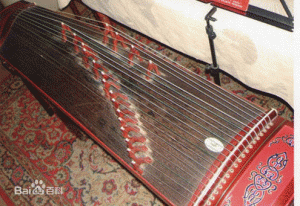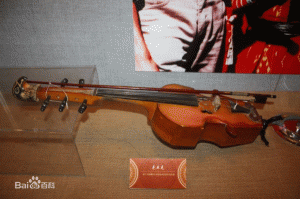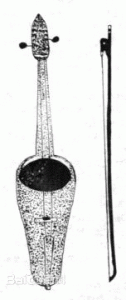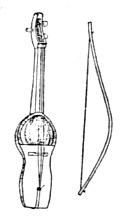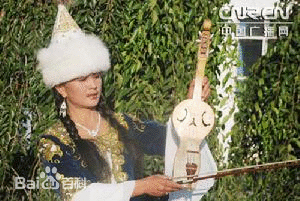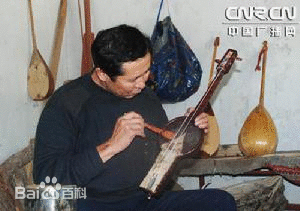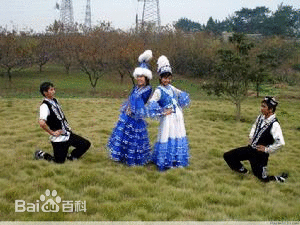Yatuo Karma, Mongolian plucked Ming playing musical instruments. Also known as Zheng. Han Zheng called Mongolia. Popular around the Inner Mongolia Autonomous Region and Liaoning Province, Jilin Province, Mongolia ghettos.
A historical retrospective
Zheng is the oldest playing stringed instruments, as early as the Spring and Autumn Period has been widely popular in the private sector, and especially in the state of Qin Sheng, known Qinzheng. “Records Lisi Remonstrance Zhuke book”:. “Husband hit urn, knocking pottery, shells Zheng Bo thigh and singing call whining, quick eyes and ears of those who, Qin also true voice,” This is the earliest record found in history books. 1979, Spring and Autumn Cliff Guixi County xianyan group found two “Thirteen Strings xylophone” should zheng early kind. The shape of ancient zither no big change, but ranging from a few strings, twelve strings and other strings to sixteen. [1]
Since Han, men of letters in the official history and poetry are talked about Zheng. Tang Dynasty poet Li Qiao, Li Bai, Liu Yuxi, Yuan Zhen, Zhang Hu, Li Shang-yin so famous poem written for koto, poet, depicting a woman zither performances hand in the “Zheng”, and said she was “floating cloud bun Shaw green, red Hua Yan charming, youthful eyes scissors, fingers peel Chuncong. “I saw her “unhappy to move the hand at the end, sending the string of hate.” Be transferred to the climax, the final screeching halt, “one thousand beads together Paisui, knife cut bang boom.” It is obvious that Cheng’s playing skills already high. In the Tang Dynasty poet, Cheng’s art is portrayed vividly, and become a glorious page in the history of zither. Our Zheng, also introduced to Japan in the Tang Dynasty, then gradually become the main instrument of Japan Pradesh music and produce many genres and famous zither music playing. Todaiji Temple in Nara, Japan Shosoin in possession of the Tang Zheng (residual) one, “Todaiji offer material loss” in the mind of “Catalpa wood zither a” 1952 has been a full recovery, according remnants shape, a long pass 190.85 cm. [1]
1206, the Mongolian hero Genghis Khan (Mongolian powerful meaning) unified Mongolia, established the Mongol Khanate, and then perish by force Liao, Western Xia conquer, defeat Jin. His grandson Kublai Khan (1215 -1294) also conquered Dali, Tibet, the demise of the Southern Song Dynasty, in 1279 established the Yuan Dynasty, which is the first in our history by a minority – Mongolian country’s regime. In the Yuan Dynasty palace, military and Mongolian folk, generally circulating thirteen and fourteen chord chord zither zither. “Yuan Shi Chi ritual” contains: “pleasures of the device, zither, such as Joseph, two slightly lowered, there are columns, thirteen strings.” Song Meng Gong “Munda equipment recorded” description: “The King (refer to wood Chinese Li) apprenticeship, they also female music accompanying …… chord zither playing mostly fourteen “high official music” and other songs. “Yuan Yang Weizhen not only a famous poet in the” Untitled “in the” twelve Phenom Kam Cheng, “the poem , in his “Spring Night Music” also wrote:. “. …… Phoenix double Zheng sign language column, playing towards the new sound Xing Xing Feng benefactor to dream jealous Woman, fairy blowing sea water far rain” has been described at the time a zither with two performances of the bomb. Ming and Qing since the Mongolian people, palace or temple Lama remains popular volume sizes, varying amounts of Yatuo strings Karma. “Baotou Heritage compilation” set: the Ming Dynasty, in Alatan Khan Palace mural “dinner music to map” Kabuki female band played twelve string Yatuo Karma. “History of Qing Dynasty” in mind: the early Qing Dynasty, the Emperor Taizong (AIXINJUELUO · Taiji) capture Lindan Han palace instruments all have “only set up six strings,” the Yatuo Karma.
Two musical difference
Mongolian various sectors using Yatuo Karma is a difference, more use of fourteen strings Yatuo army Karma for war and fighting and the Arc de Triomphe and other military activities; palace and palace used thirteen strings Yatuo Karma for Hospitality , banquets and sent to other ceremonial activities; Lama temple and civil uses twelve string Yatuo Karma, for worship, chanting and civil grand assembly (Naadam) and other religious and festive activities. Reportedly, thirteen strings Yatuo Karma represents thirteen ancient Mongol tribes and thirteen official position of solidarity. Today popular around the Yatuo Karma Inner Mongolia still a few strings vary, Yikezhaomeng ten strings, twelve strings, thirteen strings (plus one on the second string bass strings) of Yatuo Karma, Wulanchabu League thirteen strings, fourteen strings Yatuo Karma, Xilin Gol League twelve strings, thirteen strings and strings Yatuo Karma Modern sixteen, twelve string Zhaowuda Union and thirteen strings Yatuo Karma and so on.
3 shape structure
Yatuo Karma’s shape and structure, although popular with the rest of the zither identical (Figure), but also has its own uniqueness. Especially traditional Yatuo Karma Inner Mongolia Autonomous Region, with a resonance box multi-thick piece of paulownia board dug into the trough, length 130 cm to 160 cm wide and 20 cm to 24 cm above the sheet from Mongolia to Paulownia ends slightly sagging, and some piano tail longer. The bottom left and right ends of the central, respectively, with a circular opening or a shaped sound hole. Quintana painted dark brown paint, the first piano, violin and piano box four weeks tail surfaces or painted dragon mosaic image or cloud volume patterns. Zhang stringed or casing string, with a post horse, the horse can move the column to adjust the pitch of the next chord. Some Yatuo Karma at the piano is also connected with a long tail 20 cm folding zither.
4 playing method
While playing, the use of sitting, sitting cross-legged on the grounds who played the piano played by the body flat on the front legs, or playing the piano who first placed the upper right leg, tail strike the piano, the piano can also be placed flat wooden or high platform . Right thumb, index finger, middle finger bone nails wearing bullet dial dial strings, the left index finger, middle finger mainly supplemented thumb, ring finger Anxian take tone. Right hand care, hack, hook, pick, wipe, buckle, round, even care, even wiping, double tick, Twill and other fingering; left by law is false, false, empty, sliding, kneading, trembling, wiping, points, etc. skills. Left index finger bone nails can also be worn with the right hand alternately playing plectrum. Many do not wear pastoral bone nail plectrum playing. Yikezhaomeng tune a stringed instrument of ten strings Yatuo Karma: d1, e1, c, g, c1, d1, g1, c2, d2, g2, range c-a2. Wulanchabu twelve string Yatuo Karma tune a stringed instrument is: d, a, b, d1, e1, g1, a1, b1, d2, e2, g2, a2, range d-c3. Fourteen strings Yatuo Karma’s tuning up two additional treble c3, d3, range d-f3. Xilin Gol League twelve string Yatuo Karma’s law Mongolian folk tune a stringed instrument widely used, it is also known traditional tune a stringed instrument method, tune a stringed instrument is: b, f1, g1, d, a, d1, e1, a1, d2, e2, f2, a2, range d-c3. Yatuo Karma pronunciation loud, sounds rough. Can be used for solo, ensemble or accompaniment. Mongolian famous musicians have four generation descendant of the royal musicians wooden bar the Soviet Union, the official cloth Dorji and Bayan Kathmandu and so on.
5 Traditional Music
The famous traditional songs are: “asl” and dubbed the flag Xilinguole name “asl”, “Dutch English flower”, “A their plans,” “octave”, “high forest dig Sea” and “poly come spring birds “and so on.
6 Improved Yatuo Karma
[Karma] Improved Yatuo Ming Mongolian bomb plucked instruments. Popular in Chifeng City.
Karma same shape with the traditional Yatuo. Is based on the traditional twelve string Yatuo Karma on strings made reference to various playing techniques and improved by a series of bomb stringed instruments. It includes twelve string treble Yatuo Karma, sixteen and twenty-string tenor Yatuo Karma Karma-string bass Yatuo three.
Playing posture and the same methods and Yatuo Karma, maintained the traditional method twelve string Yatuo Karma tune a stringed instrument, with a total range from # e-c4, nearly four octaves. Treble Yatuo Karma tone crisp and bright; Alto Yatuo Karma sound soft, mellow; bass Yatuo Karma sounds rich, rough. Commonly used in solo, ensemble or accompaniment, has become one of the main instruments of Mongolian ethnic band, good at playing the Mongolian long-tune music, full of rich national style.
7 famous songs
More famous songs include: solo song “four princess” Trio song “Zhaojun OK” ensemble “Chifeng elegant music”, “Chennai Gate A tone” and so on.

